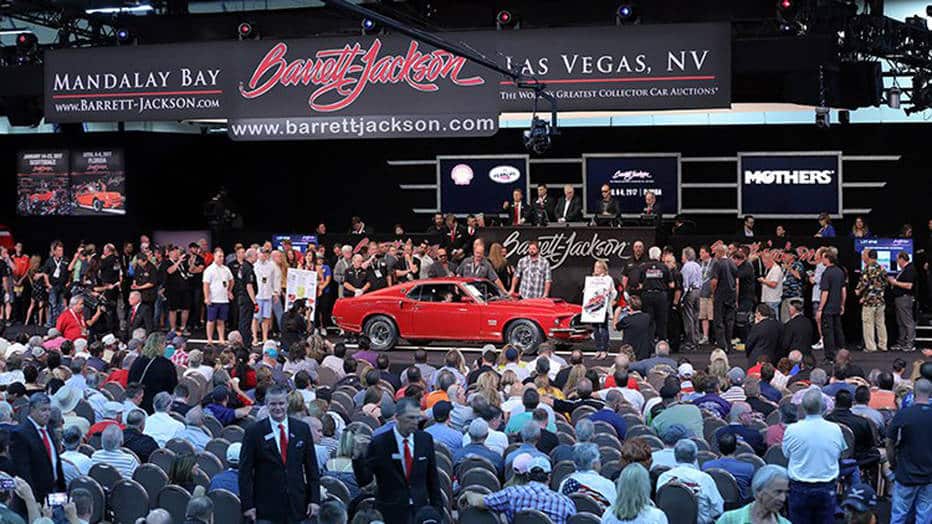
The answer to the question what’s the best fuel for my classic car is usually an easy one to answer. Pure E0 gasoline (pure gasoline without ethanol). A trip to the local gas station might leave you scratching your head however where you can buy pure gasoline as it can be very difficult to hunt down.
You see, by 1978, America had pretty much rid itself of leaded gas. Gas was now an unleaded gasoline-ethanol blend, also known as gasohol. Tetraethyl lead was originally added to gasoline as an inexpensive way to boost the octane levels. The lead also served as a buffer against micro-welds forming between the hot exhaust valves and their valve seats.
Without the lead in the fuel, micro-welds were able to occur which can lead to valve seat recession. This issue is more common in performance applications like a classic track car or dragster. Normal driving and usage of a classic car using unleaded fuel is unlikely to cause valve seat recession.
As far as modern-day gas stations go, they only offer ethanol mixed gasoline. If you are one of many classic cars collectors who refuse to use E10, you are still in luck. Shell is currently developing a new premium fuel designed especially for classic cars.
You can also still find ethanol-free fuel throughout America. Pure-Gas.org is a site dedicated to listing stations that sell pure, ethanol-free gas across North America. You can click here to see the map of the United States and quickly find stations that sell pure gasoline in your area.
For those of you that are not willing or able to track down pure gasoline, there are some things you should know about ethanol mixed fuel. There are three types of gasoline-ethanol blends available: E10 (the most popular and widely used), E15, and E85. E10 is gasoline with 10% ethanol, E15 is gasoline with 15% ethanol content, and E85 is a fuel that may contain up to 85% fuel ethanol. The basic rule is E10 is acceptable for all modern-day cars and your classic car to some extent. E85 on the other hand, can only be used safely in cars that are FlexFuel compatible.
We say that E10 is ok to some extent only because your classic car or truck may not have been built to use ethanol as a fuel source. There certainly is a lot of debate about the issues that ethanol can cause in older cars, but here is what we do know for sure…
- Ethanol is a destructive solvent. It can dislodge old build-up and deposits in the fuel system, resulting in clogged filters and screens. If you run into issues using E10, make sure to check your fuel filters first to see if they are clogged.
- Ethanol has damaging effects on many types of metal, plastic and rubber parts. Over time, ethanol will disintegrate these parts. The only real solution is to replace them with parts made of material that can withstand E10. Fuel lines and inner carburetor parts are the typical parts that will need replacing. Not a big deal seeing that they would all need to be replaced eventually anyways. Just make sure to replace them with ethanol-compatible parts as explained in this video from Motorweek’s Goss’ Garage.
- Most classic car and truck owners will see an immediate reduction in performance when using E10 vs E0 (gasoline with zero ethanol). Because simple alcohol only produces about two-thirds of the power of gasoline when burned, all vehicles are going to notice a reduction in gas mileage. Classic car owners may not be concerned with gas mileage, but in some cases, it has been reported to reduce efficiency by up to 10%. That can certainly put a dent in your fuel budget if going on long cruises. To combat this, add an ethanol fuel treatment to your gas. Be sure to use additives that do not have ethanol or alcohol in them as that will only worsen the problem.
- Ethanol is known as being “hygroscopic.” What that means is that is can easily absorb water. It is so good at attracting water that it can absorb humidity in the air. Water in your fuel will lead to condensation in fuel tanks, fuel lines and carburetor fuel bowls. This means that many metal parts in your fuel system could become susceptible to rust. How do you fix that? The solution? Well I suppose you will need to replace them if corrosion occurs. The galvanic action of ethanol can also corrode unprotected steel fuel tanks. Consider a fiberglass tank as a replacement option.
- Ethanol mixed gasoline has a shorter shelf-life. E10 is going to begin separating within the first 90 days if left to sit. It’s called fuel phase separation. As the fuel begins to absorb water the gasoline will separate into layers. Gasoline will rise to the top leaving a mixture of ethanol and water at the bottom of your tank. If you were to start your classic and your fuel pump inlet is down in the water/ethanol layer, you can cause some serious damage to your motor. This can be a major issue for those that must store their classic cars during the winter. It is not uncommon to have to store for more than 90 days. To avoid any issues, make sure your fuel tank is completely full at the time of storage and add a fuel additive that stops water separation. Again, make sure there is no additional ethanol in the additive.
There are lots of opinions on what the future holds for ethanol laced fuels, but one thing is for sure, it isn’t going away anytime soon. Not unless everything goes electric which isn’t too farfetched! For now, classic cars & trucks, boats, older motorcycles, and small two-stroke engines will all continue to have issues with ethanol mixed gasoline.

